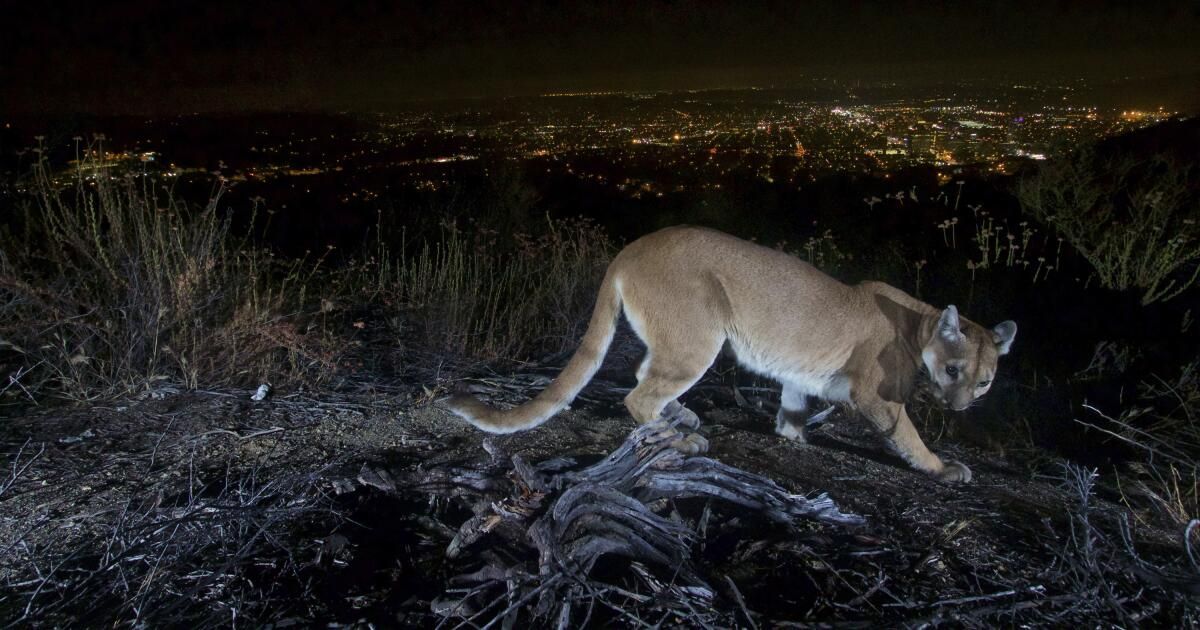Book Review
Unnatural Habitat: The Native and Exotic Wildlife of Los Angeles
By Craig Stanford
Heyday: 264 pages, $24
If you buy books linked to on our site, The Times may earn a commission from Bookshop.org, whose fees support independent bookstores.
Los Angeles tends to appear to outsiders as a borderless hodgepodge of suburbs spread across a hostile landscape without a significant natural source of water. When not on fire, it appears to slide into the ocean or collapse under the weight of its own indomitable development.
And yet, immigrants from Los Angeles will continue to brag to their loved ones across the country that they could go skiing and surfing on the same day (if for some reason they wanted to). However, as conservationist Craig Stanford reminds us, you don't have to drive to Big Bear or the beach to feel the pulse of nature in Los Angeles.
In “Unnatural Habitat: The Native and Exotic Wildlife of Los Angeles,” Stanford offers Angelenos (and anyone interested in the function and dysfunction of (sub)urban ecosystems) a guide to the natural life that abounds beneath our freeways. and wanders through our backyards. and fight for survival in the deserts and mountains that surround our city.
Stanford, who has conducted field research around the world, lives in Pasadena, in the foothills of the San Gabriel Mountains. As he details more than 150 species of Los Angeles flora and fauna, from native mountain lions to exotic earthworms, naturally occurring weeds, and palms That, surprisingly, is not so: it evokes a portrait of the special, strange and unexpectedly fragile wildlife of an unusual city. It evokes evolutionary stories, stories of the arrival of strange species and their effects on an ecosystem that is massively and continually altered by human influence.
But Stanford's mission here is not simply to describe the creatures at hand, although he does a lot of that, never hesitating to anthropomorphize even the most inhuman of them; For him, snakes are “secret” and tarantulas “sinisterly deliberate.” The book excels (even feels necessary) when it reveals the intricate interplay between human and animal habits; social institutions and nature; common sense and our desire to decorate and navigate Los Angeles as we please.
It also offers recipes, micro and macro, private and public, for better management of our environment. We can decide what we plant in our own gardens, for example, so Stanford advises readers to fill their gardens with something native and drought tolerant that can contribute to a more robust, stable and diverse ecosystem. (Of course, most of our city's residents probably won't get the memo.)
On the public front, Stanford highlights possible institutional improvements as well as bureaucratic obstacles. In what is perhaps the most compelling chapter of the book, he writes about the man-made challenges to Los Angeles' economy. Mountain lions. The most serious threat to these magnificent animals is our ubiquitous highway system: since 2015, more than 500 California mountain lions have been hit by cars. Perhaps anyone could guess, but what a layman would never know without Stanford's book is that our busy roads severely limit the territory that cougars can roam, leading to isolation and inbreeding.
TO wildlife crossing is under construction on the 101 to allow mountain lions to safely traverse the highway, expanding the territory they can access. But the cost of the project is high (about $90 million), as is competition for land that could otherwise serve as a sanctuary for wildlife. Normally optimistic, Stanford can be cynical in the face of such frustrations.
His unexpected ideas range from the comical to the shocking. He offers a cat snapshot of him enjoying a picnic with the finches in his backyard birdbath and then explains the vicious cycle that creates invasive feral cat populations that literally kill. thousands of millions of birds in North America each year.
Stanford's self-proclaimed ecological purism doesn't mean he believes we should eliminate non-native species entirely, however. In fact, human interference has helped many species worth conserving. Hummingbirds, for example, stay in Los Angeles year-round because our backyard feeders prevent them from migrating in search of sugar plants. With this comes the responsibility of caring for the wildlife we cultivate in this landscape which he says is “beautiful but largely non-functional”. It's unclear whether he thinks we're up to the task.
At his best, Stanford weaves together vivid prose, a reverence for nature, and a seasoned Angeleno eye for what makes this city unique. Sometimes, however, he fails to establish a connection between a species and the city, punctuating the book with taxonomy-laden vignettes without context.
Regardless, the overall effect is a valuable and illuminating entry in the tradition of works that explore the effect of urbanization on the environment. (Stanford references Rachel Carson's “Silent Spring,” and that author's influence is felt throughout her book.) Moral questions abound, ranging from animal rights to humanity's role in nature. Stanford's underlying message is clear and simple (and often repeated): to preserve a Los Angeles in which humans and nature benefit from each other, we must increase our understanding of our city's fragile mosaic of wildlife.
Stanford is tough only when necessary, and his subtlety often hits harder. One chapter deals with a succulent so common in Los Angeles that I never knew its name: it is called Live-Forever (genus Dudleya), and, ironically, is at risk of extinction due to poaching. You can buy the plants at Home Depot, and yet they are disappearing from our cliffs and hiking trails. At the end of the chapter, Stanford articulates a deeply disturbing truth: “Each generation grows accustomed to the reach of Nature around it.”
Despite everything it has to say about it, Los Angeles' biodiversity is dwindling before our eyes. Fortunately, with Stanford's help, we can take on some of his vision of preserving our native species while effectively introducing exotic species. After all, Los Angeles is a city of transplants.
Daniel Vitale is a writer in Los Angeles and author of the novel “Orphans of Canland.”












